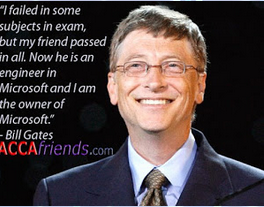KANSAS CITY, Mo. – The voice of reason inside the Kansas City Chiefs locker room boomed over the rest of the delicate flowers who were trying to whisper away their boo-boos. As his teammates rationalized the 23-7 shellacking the Indianapolis Colts laid on the Chiefs, veteran cornerback Dunta Robinson staked out a spot in front of his locker, stood tall and encapsulated Kansas City's entire season in 51 succinct, spot-on words.
"They came in and kicked our ass today," Robinson said. "No excuses. We've got to look in the mirror and decide what kind of team we want to be moving forward.
"Yeah, OK. You dominate Oakland. Yeah. You dominate the Redskins. But what are we going to do when we face other powerhouses?"
Boiled down to its essence, Robinson asked a simple question that observers of this surprising Chiefs team have echoed for the last four months: Are these Chiefs frauds?
If the 15th game of their season is any indication, the answer is a resounding yes. The Chiefs on Sunday were not just bad. They were bad at Arrowhead Stadium, the former house of horrors in which they've now lost three consecutive games. They were bad against another playoff team, a foreboding thought considering chances are they'll play these very Colts in two weeks – at Lucas Oil Stadium. They were bad at taking care of the ball, bad at protecting quarterback Alex Smith, bad at controlling their emotions and bad at tackling.
This was a bury-your-face-in-a-plate-of-barbeque-to-drown-the-sorrows game, the sort that doesn't linger on a team's palate so much as inject nasty granules of bitterness, and do something like remind Robinson, the 10-year veteran, that no matter how good these Chiefs have looked, they've done the vast majority of their damage against a last-place schedule.
Fact: The Chiefs have 11 wins. Those victories came against teams that entered Sunday with a combined 51-103 record.
Fact: The Chiefs have four losses. Those defeats came against teams that entered Sunday with a combined 38-18 record.
"When you don't come to play," cornerback Brandon Flowers said, "this is what happens."
It happened so quickly, too. Less than four minutes into the game, Kansas City held a 7-0 lead after Jamaal Charlesrushed through Indianapolis' defense for a 31-yard touchdown. From there, the offense went stagnant. Knile Davis lost a fumble. Alex Smith literally punched an interception. And then threw another. And all the while, the Colts ran a balanced offense, with Donald Brown running for a touchdown and catching another from quarterback Andrew Luck, who was methodical, patient and exacting in finding holes on a day the Chiefs had more blown coverage than a cell phone in rural areas.
The nadir may well have come late in the third quarter, when Indianapolis led 20-7. Luck threw an incomplete pass on third-and-3, only for a late flag to fly in because second-year defensive tackle Dontari Poe drew a taunting penalty for shoving a finger in the face of offensive lineman Mike McGlynn while barking at him.
That is the sort of day it was for the Chiefs: Eat a 15-yard penalty for trash-talking an anonymous offensive lineman, and watch the Colts march down for an Adam Vinatieri field goal and 23-7 lead.
"In a 16-game season, it happens every now and then," Chiefs guard Geoff Schwartz said. "Today was a bad day for it to happen."
It was particularly bad because it left the Chiefs prone again to those questions about their viability going forward. Give them this: Coming off a 2-14 disaster, this year is an unabashed success for Kansas City. Despite his flaws, Smith is the best quarterback the Chiefs have seen in nearly a decade. Charles is a week-in, week-out revelation. The defense carried them to the 9-0 start that came courtesy of a schedule stuffed with patsies.
Those victories, along with the combined 101 points Kansas City laid on Washington and Oakland the past two weeks, instilled in the Chiefs that the fraud tag is unfair.
"This is the best team I've ever been on," Robinson said. "I played in Atlanta last year, for the past three years, and we were a pretty good football team. But if we don't get focused, we're going to be sitting back here."
Robinson's words weren't as constructive as they were instructive. He didn't say how the Chiefs needed to get better other than some platitudes about getting to the stadium earlier or focusing harder. No, this was a move out of the veteran playbook designed to remind the Chiefs just how fragile their season is and to force them to ask themselves if they're merely a team that beats up on the dregs or can play up to their superiors.
They may well be. The Chiefs are, as Robinson pointed out, a well-rounded team. They can score. They can defend. They can put the special in special teams. Everything with this team, of course, necessitates "can" as a modifier, something the team owner himself uses as well.
"Once you're in the playoffs," Clark Hunt said, "anything can happen."
The Chiefs are there, locked into the AFC's No. 5 slot, and so chances are next week won't teach us much about which Kansas City team will show up the first weekend of January. Is it the team that dominated Oakland and Washington or the team that went meekly into the cold night Sunday, much as it had against Denver twice earlier in the season?
Soon enough, they'll answer Dunta Robinson's question for him.







































